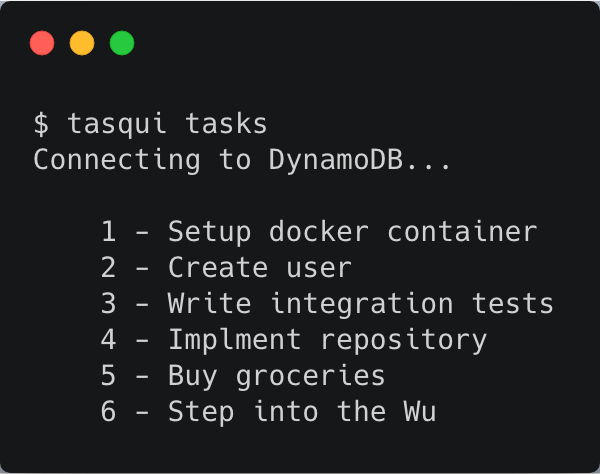
Ana Nogal
See other author's postsIn the last post, Code Smells - Part I, I talked about the bloaters: they are code smells that can be identified as Long Methods, Large Classes, Primitive Obsessions, Long Parameter List and Data Clumps. In this one, I would like to dig into the Object-Orientation Abusers and the Change Preventers.
Object-Orientation Abusers
This type of code smell usually happens when object-oriented principles are incomplete or incorrectly applied.
Switch Statements
This case is simple to identify: we have a switch case. But you should consider it a smell too if you find a sequence of ifs. (That's a switch case in disguise.)
Why are switch statements bad? Because when a new condition is added, you have to find every occurrence of that switch case.
So while talking to David, he asked me: and what happens if I encapsulate the switch into a method, is it acceptable then? That's really a good question... If your switch case is only used to "take care" of one behaviour and that's it, then it might be ok. Remember identifying a code smell doesn't mean that you have to get always rid of it: it's a trade off. If you find your switch statement replicated and each replication has different behaviour, then you cannot simply isolate the switch statement in a method. You need to find a proper "home" for it to be in. As a rule of thumb, you should think of polymorphism when you find yourself in this situation. There are two refactoring techniques that we can apply here:
- Replace Type Code with Subclasses This technique consists of creating subclasses for each switch case and applying the respective behaviour to these subclasses.
- Replace Type Code With Strategy Similar to the above one, in this case, you should make use of one of the patterns: State or Strategy.
So when to use one or the other? If the Type Code does not change the behaviour of a class you can use the Subclasses technique. Separating each behaviour into its appropriate subclass will enforce the Single Responsibility Principle and make the code more readable in general. If you need to add another case, you just add a new class to your code without having to modify any other code. So you apply the Open/Closed Principle.
You should use the Strategy approach when the Type Code affects the behaviour of your classes. If you're changing the state of the class, fields and many other actions then you should use the State Pattern. If it only affects how you select a behaviour of the class then the Strategy Pattern is a better choice.
Hmm... It's a little confusing, no? So let's try with an example.
You have an enumeration EmployeeType:
public enum EmployeeType
{
Worker,
Supervisor,
Manager
}
And a class Employee:
public class Employee
{
private float salary;
private float bonusPercentage;
private EmployeeType employeeType;
public Employee(float salary, float bonusPercentage, EmployeeType employeeType)
{
this.salary = salary;
this.bonusPercentage = bonusPercentage;
this.employeeType = employeeType;
}
public float CalculateSalary()
{
switch (employeeType)
{
case EmployeeType.Worker:
return salary;
case EmployeeType.Supervisor:
return salary + (bonusPercentage * 0.5F);
case EmployeeType.Manager:
return salary + (bonusPercentage * 0.7F);
}
return 0.0F;
}
}
It all looks ok. But what happen if you need to calculate the year bonus? You will add another method like this:
public float CalculateYearBonus()
{
switch (employeeType)
{
case EmployeeType.Worker:
return 0;
case EmployeeType.Supervisor:
return salary + salary * 0.7F;
case EmployeeType.Manager:
return salary + salary * 1.0F;
}
return 0.0F;
}
See the repetition of the switch? So let's try first the subclass approach: Here is the superclass:
abstract public class Employee
{
protected float salary;
protected float bonusPercentage;
public Employee(float salary, float bonusPercentage)
{
this.salary = salary;
this.bonusPercentage = bonusPercentage;
}
abstract public float CalculateSalary();
virtual public float CalculateYearBonus()
{
return 0.0F;
}
}
And here we have the subclasses:
public class Worker: Employee
{
public Worker(float salary, float bonusPercentage)
: base(salary, bonusPercentage)
{}
override public float CalculateSalary()
{
return salary;
}
}
public class Supervisor : Employee
{
public Supervisor(float salary, float bonusPercentage)
: base(salary, bonusPercentage)
{}
override public float CalculateSalary()
{
return salary + (bonusPercentage * 0.5F);
}
public override float CalculateYearBonus()
{
return salary + salary * 0.7F;
}
}
With the Strategy approach we would create an interface for calculating the remuneration:
public interface IRemunerationCalculator
{
float CalculateSalary(float salary);
float CalculateYearBonus(float salary);
}
With the interface in place, we can now pass to the employee any class that conforms to that protocol and calculate the correct salary/bonus.
public class Employee
{
private float salary;
private IRemunerationCalculator remunerationCalculator;
public Employee(float salary, IRemunerationCalculator remunerationCalculator)
{
this.salary = salary;
this.remunerationCalculator = remunerationCalculator;
}
public float CalculateSalary()
{
return remunerationCalculator.CalculateSalary(salary);
}
public float CalculateYearBonus()
{
return remunerationCalculator.CalculateYearBonus(salary);
}
}
Temporary Field
This case occurs when we are calculating a big algorithm that needs several input variables. Creating these fields in the class has no value most of the time because they are just used for this specific calculation. And this can be dangerous too because you have to be sure you reinitialize them before you start the next computation.
Here the best refactoring technique is to use Replace Method with Method Object, which will extract the method into a separate class. Then you can split the method into several methods within the same class.
Refused Bequest
This code smell is a little tricky to detect because this happens when a subclass doesn't use all the behaviours of its parent class. So it's as if the subclass "refuses" some behaviours ("bequest") of its parent class.
In this case, if it makes no sense to continue to use inheritance, the best refactoring technique is to change to Delegation: we can get rid of the inheritance by creating a field of the parent's classes type in our subclass. This way every time you need the methods from the parent class you just delegate them to this new object.
When the inheritance is the correct thing to do, then move all unnecessary fields and methods from the subclass. Extract all methods and fields from the subclass and parent class and put them in a new class. Make this new class the SuperClass, from whom the subclass and parent class should inherit. This technique is called Extract Superclass.
Alternative Classes with Different Interfaces
Hmm, this case makes me think of "lack of communication" between members of the same team because this happens when we have two classes that do the same thing but have different names for their methods. Start by Renaming Methods or Moving Method, so you can have both classes implementing the same interface. In some cases, only part of the behaviour is duplicated in both classes. If so, try Extract Superclass and make the original classes the subclasses.
Change Preventers
Oh boy! This kind of code smells are the ones you really want to avoid. These are the ones that when you make a change in one place, you have to go basically throughout your code-base making changes in other places too. So it's a nightmare that all of us want to avoid!
Divergent Change
This is the case when you find yourself changing the same class for several different reasons. This means that you are violating the Single Responsibility Principle (which has to do with separation of concerns).
The refactoring technique applied here is Extract Class since you want to extract the different behaviours into different classes.
Shotgun Surgery
This means that when you make a small change in a class, you have to go and change several classes at the same time.
Even though it seems the same as the Divergent Change smell, in reality, they are opposite of each other: Divergent Change is when many changes are made to a single class. Shotgun Surgery refers to when a single change is made to multiple classes simultaneously.
Here the refactoring technique to apply is Move Method and/or Move Field. This will permit you to move the duplicated methods or fields to a common class. If that class doesn't exist, create a new one. In the case where the original class stays almost empty, maybe you should think if this class is redundant, and if so, get rid of it by using Inline Class: move the remaining methods/fields to one of the new classes created. This all depends on whether the original class still has any responsibilities.
Parallel Inheritance Hierarchies
This case is when you find yourself creating a new subclass for class B because you add a subclass to class A.
Here you can: first, make one of the hierarchy refer to instances of another hierarchy. After this first step you can then use Move Method and Move Field to remove the hierarchy in the referred class. You can apply here the Visitor pattern too.
Conclusion
In the case of Object-Orientation Abusers and Change Preventers, I think that they are simpler to avoid if you know how to apply a good design to your code. And that comes with a lot of practice.
Today I've talked about a few refactoring techniques, but there are a lot more. You can find a good reference to all of then in Refactoring.com.
And as I said in the first part of this series, code smells can't always be removed. Study each case and decide: remember there is always a trade off.
Related Blogs


- By André Guelfi Torres
- ·
- Posted 31 Mar 2020
Types and accepting the fact that I might not be that smart. - Part 2
Get content like this straight to your inbox!
Software is our passion.
We are software craftspeople. We build well-crafted software for our clients, we help developers to get better at their craft through training, coaching and mentoring, and we help companies get better at delivering software.
Latest Blogs
Software Modernisation and Employee Retention...
Becoming PCI Compliant
Codurance signs the Microsoft Partner...
Useful Links
Contact Us
London, EC1M 5PU
Phone: +44 207 4902967
2 Mount Street
Manchester, M2 5WQ
Phone: +44 161 302 6795
Carrer de Pallars 99, 4th floor, room 41
Barcelona, 08018
Phone: +34 937 82 28 82
Email: hello@codurance.com
